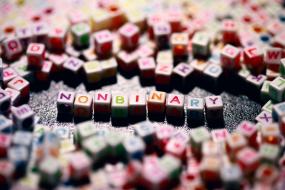
What is the best way to describe your gender identity? How do you communicate your gender to others by the way you seem or act – in other terms, so how would you portray your gender? Has your gender identification or gender expression evolved through time, or has it remained the same? These types of questions are especially useful if you’re curious about how gender identity and expression change as youngsters get older. These questions, of course, may strike a chord with many individuals.
Gender fluidity may be a means for some young people to experiment with gender before settling on a more stable gender expression or identity. Others may experience gender fluidity for the rest of their lives as a natural aspect of their gender identity.
What is Gender fluidity
“Gender-fluid” is a term used by certain people to describe themselves. It falls under the transgender and nonbinary spectrum as an identity, which refers to those whose gender identity differs from the sex allocated to them on their birth certificate. A person’s gender identity is nonbinary if it does not fit into strict cultural classifications of female or male. Gender-fluid people aren’t the only ones who go through changes in their gender expression or identity. Neither do all people want gender-affirming medical procedures to transform their bodies to match their gender identity.
Gender Fluidity vs Transgender
Though some people develop a gender identity early in life, others may identify with one gender for a period of time before switching to another. For example, a person born female may identify as a girl until they reach adolescence, after which they will identify as a guy for the rest of their lives. This individual would be transgender, but not necessarily gender-fluid. Another person who follows this developmental arc might identify as a boy until their 20s, then as nonbinary, and then as a boy again later in adulthood. Because they have experienced one or more changes in their gender identity or gender expression, this person could be classified as gender-fluid. It’s important to clarify, however, that they may never use the phrase “gender-fluid” as a self-identification label.
Changes That People May Undergo
Anyone who designates as gender-fluid is, in the end, a gender-fluid individual. The term is frequently used to mean that a person’s gender expression or gender identity — in other words, their internal sense of self — changes. Gender fluidity, on the other hand, can take on different forms for different people. Gender identity is often formed in early childhood, around the age of two or three. Gender identity is formed in a variety of social contexts, including a person’s family, larger community, and society and historical period in which they live.
Each of these groups may have very different gender expression and gender identity social expectations. Gender identity and expression develop early in life for many people and remain consistent over time. For others, one or the other could alter. While such changes can occur at any point in a person’s life, they are more popular among children and teenage years than later in life.










